At Swarthmore, the liberal arts stoke adventure for the intellectually curious. Spanning the many disciplines of knowledge and thought, they give students new ways of thinking and looking at the world. This is perhaps best illustrated by the array of journeys our students take toward their futures — the opportunities they seize, the resources on campus they maximize.
Six seniors recently took a moment to share the paths they have taken, what they have valued most from their Swarthmore experience, and what comes next.
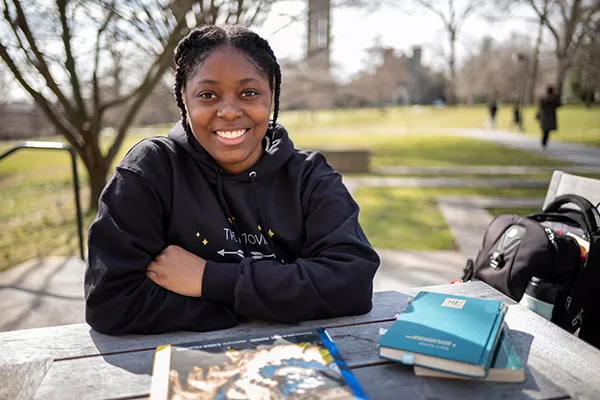
Naja Smith ’20
Sociology & Anthropology Major and Psychology and Biology Minor from Gretna, La.
The arrival to my major was a long and wild journey, but embodied the very definition of liberal arts. I started out as a biology/pre-med major, thinking that’s what I needed to do in order to be successful, which is what I thought my parents expected. It was hard for me to wrap my head around the idea that success can be found in a variety of places. I was struggling with appealing to one side that said only these paths led to success and another side that wanted to explore.
The sides clashed when I declared a biology major and psychology minor, and culminated during my junior fall when I realized I wasn’t happy. I was always fascinated with studying different cultures, wondering how society impacted the physical and mental health of humans, so throughout my three years I took sociology & anthropology courses alongside bio and psych courses — just fully embracing the essence of liberal arts with happiness.
While I was most happy taking these courses, I definitely leaned more toward the soc/anth perspective, so I then decided that soc/anth was the road for me with a bio/psych minor. Now I’m midway through a thesis, and instead of having anxiety, I’m experiencing happy stress. With my degree, I plan on entering the public health field and conducting research that explores the experience of the underrepresented suffering from health disparities around the world.
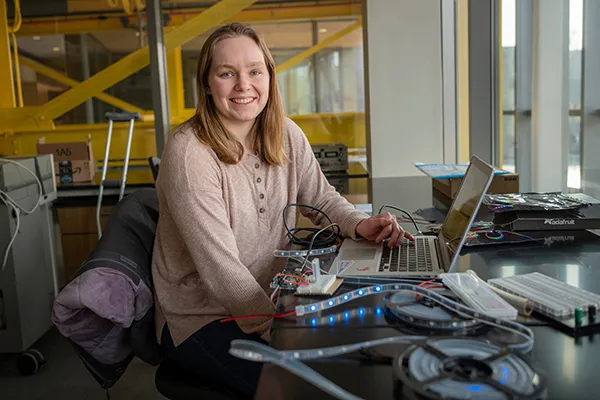
Clare Cushing ’20
Spanish and Engineering Major from Colleyville, Texas
At Swarthmore, I was drawn to engineering by its problem-solving nature and its use of math, science, and technology to create solutions. I was motivated by its integration in the physical world and that I could see engineering solutions in an everyday context. As for Spanish, I loved that it allowed me to connect with a whole different group of people from various countries, backgrounds, and cultures through language.
After taking classes in both areas my freshman year, I was drawn to the project-based learning in engineering and studying Spanish literature, culture, and society in its own language. I was not only certain that I wanted to major in both of them, but also that I wanted to connect the two. I really enjoyed the few times that engineering popped up in Spanish classes and vice versa, but the big connection between the two came up during my study abroad in Madrid, Spain.
I direct-enrolled at a local Spanish university and took an engineering course there. It immersed me in a new approach to engineering. While the fundamentals were all the same, I learned about the engineering problems that are unique to Spain and their approach to solving them. This experience allowed me to combine my knowledge of Spanish language and culture with the technical and analytical skills of engineering to solve problems. I hope to continue to find the connections between my majors and, in the future, use my language skills to solve engineering problems across different countries and cultures.
Swarthmore has not only given me the unique opportunity to study two very different fields, but has challenged me to make connections among them despite their inherent differences. I am grateful for all of the opportunities that I have had to explore and combine my many interests.
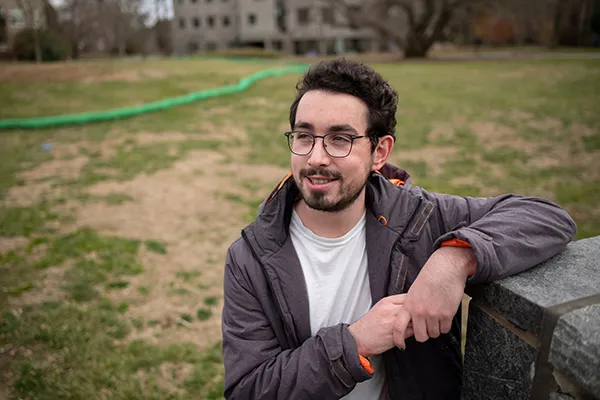
Max Katz-Balmes ’20
Environmental Studies and Economics Major from Berkeley, Calif.
Before coming to Swarthmore, I considered architecture, civil engineering, and environmental engineering, but eventually realized none of those fields inspired me. Fortunately, during the summer following my junior year of high school, I attended embARC, an environmental design course at the University of California, Berkeley. While the program primarily focused on architecture, it also included an environmental planning component. I worked with city administrators in a nearby town to develop recommendations to counteract the environmental impacts of urban growth. My most important insight while working on the project was that urban planners could impact human behavior and social interaction, not only to address climate change, but also to combat poverty and inequality.
I knew coming to Swarthmore that I tentatively wanted to pursue a career in sustainable planning. Still, in order to explore other possibilities and confirm my interests, I spent my first two semesters taking a variety of history, English, peace & conflict studies, math, environmental studies, economics, and chemistry courses. Although I enjoyed almost all of them, I couldn’t see myself falling in love with any discipline except for environmental studies. Environmental studies would give me the freedom to take courses across departments while also refining my knowledge of environmental justice work, environmental planning, and urban environmentalism. Further, environmental studies is both theoretical (as opposed to environmental science) and practical, allowing me to simultaneously engage with high-level concepts and tangible activism.
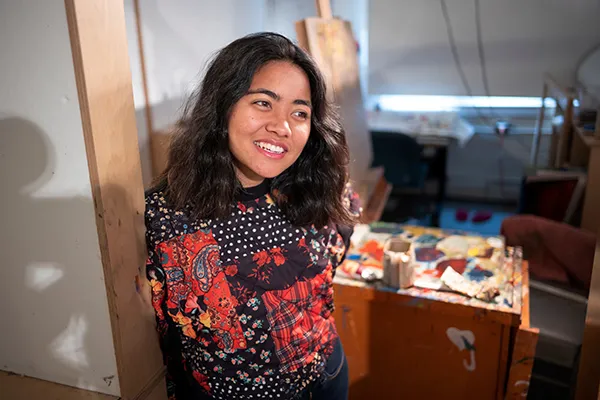
Aayushi Dangol ’20
Computer Science and Art Major from Kathmandu, Nepal
At international student orientation, I talked to a senior who went on about how much he loved computer science at Swarthmore, how well it’s taught and how supported it is. So I enrolled in Introduction to Computer Science, and, to be completely honest, just fell in love with it. The way computer science was taught here was so different than I was ever taught in my high school.
There was a lot of problem solving to it, which I really, really liked. But what I also really came to appreciate was how small the department was and how supportive my professors were. I got to study abroad in Budapest, Hungary, specializing in more computer science subjects. It was just love at first sight when it came to computer science.
How I came to deciding I also wanted to be a studio arts major is a completely different story. In childhood, I used to paint and doodle a lot, but I stopped in high school, feeling like I should dedicate my time in more STEM classes. But at Swarthmore, I got this amazing opportunity to work with [Massey Burke '00,] an alum who was working with clay, making these amazing ceramic pieces. That really brought back my emotions as a painter and as an artist that I had lost touch with.
It might not make sense to some people, but I do feel my majors complement each other. My computer science labs take six to eight hours to complete, with fixed deadlines. It’s all about solving problems. But at the end of the day, I get to go to my studio and enjoy the solitude of painting; the mindfulness of being able to create something on my own time, at my own pace. It’s an entirely different type of problem solving and critical thinking that helps me balance the right side and the left side of my brain. It brings balance to my time, my life.
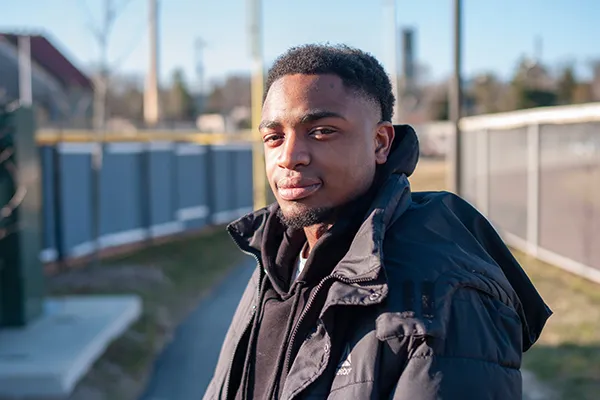
Felix Laniyan ’20
Psychology Major and English Literature Minor from Parkville, Md.
I picked my psychology major mainly due to the psychology class that I took in high school. I really enjoyed the class and the topics that we covered, so I knew coming into Swarthmore that was a major area of interest. As for my minor, I decided to choose English. This is because I’ve always been a pretty strong writer, and many of the English classes seemed interesting to me. As for where these two subjects are going to take me, I’m not completely sure yet; the hope is that in a couple of years, I will either be in law school or a psychology graduate program.
As for English, there were many classes that were offering interesting topics that I did not expect to encounter in college. For example, in the Tolkien and Pullman and Their Literary Roots class I took, we read books like The Lord of the Rings and we even watched the movie a little bit. These kinds of readings made the class a lot more fun and engaging for me. One important tool that I will be leaving Swarthmore with is the ability to think critically about an array of topics. Also, Swarthmore has helped me a lot with my time-management skills. This has been evident in my internships and jobs over the summer, where I was praised by my bosses for being an efficient and quick worker.
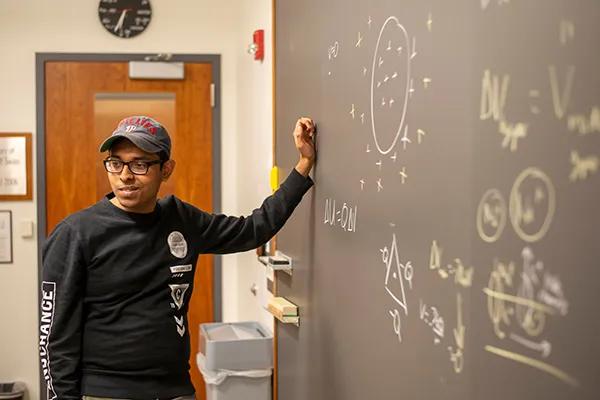
Tarzan MacMood ’20
Mathematics and Educational Studies Special Major from Upper Darby, Pa.
I came to Swarthmore with this idea that I would become a doctor. But once I got here, I did the thing that so many Swatties do, which is adjust to the culture, the academic experience. And I was really just trying to find my place on campus.
It was really the second semester where I told myself, “OK, I need to lean into this liberal arts core.” That led me to Introduction to Education — some serendipity, in that it replaced another course whose prerequisites I hadn’t completed yet. And I had the chance to go back to my hometown to do some tutoring, where I observed classrooms. All of a sudden, I realized education was becoming a passion of mine. I spent that whole semester thinking about the things I was learning in my education class, and how much fun I was having in math class.
For a long time, I tried to convince myself to go one way or the other: medicine or education. But through mentorship at Swarthmore, I realized that it never really had to be that. It never had to be that I need to make a final decision that will determine the next 20 or 30 years of my life.
I’ve had so many revelations and reflections, and come to terms with my passion for teaching and my desire to contribute to the field of education. This journey has led me to have a fuller understanding of who I am and who I want to be. It has influenced the direction of my thesis and my goals as a tutor at Swarthmore. And it fills me with excitement for my next step, which is to return to high school as a math teacher.
And wherever life takes me after that, whether it be further in the field of education or back to my original love of medicine, or somewhere else because of the things I learn over time, I’m cool with that. But it was through the experiences at Swarthmore that I was able to realize that.



